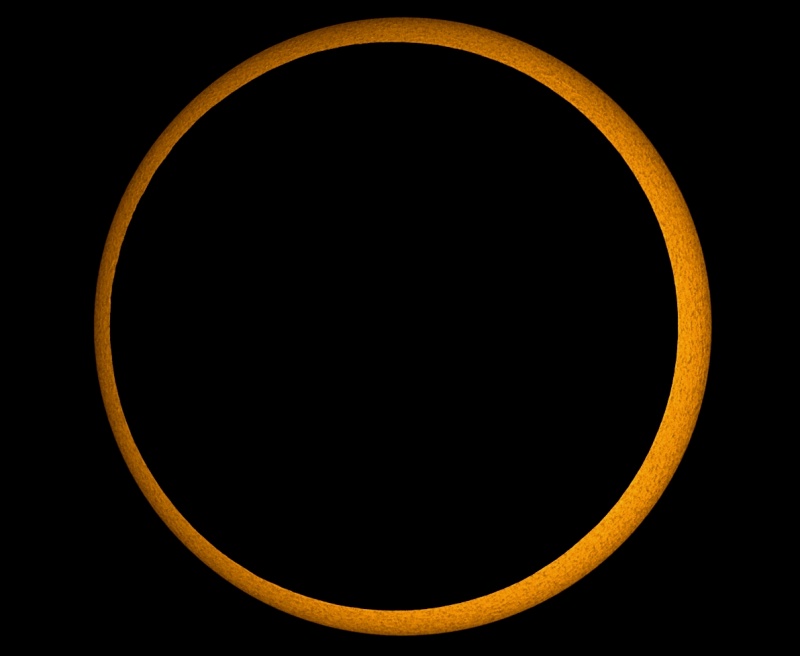Credit & Copyright: Mikael Svalgaard
Explanation:
The Moon's shadow raced across
planet Earth on
January 15.
Observers within the central shadow track were able to witness
an annular
solar eclipse
as the Moon's apparent size was too small to
completely cover the Sun.
A visually dramatic
ring of fire, the annular phase
lasted up to 11 minutes and 8 seconds depending on location,
the longest annular solar eclipse for the next
1,000 years.
This picture of the Moon's silhouette just before mid-eclipse was taken
within the eclipse path from the city of Kanyakumari at the
southern tip
of India.
The telescopic image was made through a filter that blocks most visible
light, but still transmits light from
hydrogen atoms.
As a result, detailed mottling, or granulation, caused by heat
convection in Sun's
atmosphere can be seen around the dark lunar disk.
1999 2000 2001 2002 2003 2004 2005 2006 2007 2008 2009 2010 2011 2012 2013 2014 2015 2016 2017 2018 2019 2020 2021 2022 2023 2024 2025 |
Yanvar' Fevral' Mart Aprel' Mai Iyun' Iyul' Avgust Sentyabr' Oktyabr' Noyabr' Dekabr' |
NASA Web Site Statements, Warnings, and Disclaimers
NASA Official: Jay Norris. Specific rights apply.
A service of: LHEA at NASA / GSFC
& Michigan Tech. U.
|
Publikacii s klyuchevymi slovami:
annular solar eclipse - kol'ceobraznoe solnechnoe zatmenie
Publikacii so slovami: annular solar eclipse - kol'ceobraznoe solnechnoe zatmenie | |
Sm. takzhe:
Vse publikacii na tu zhe temu >> | |
